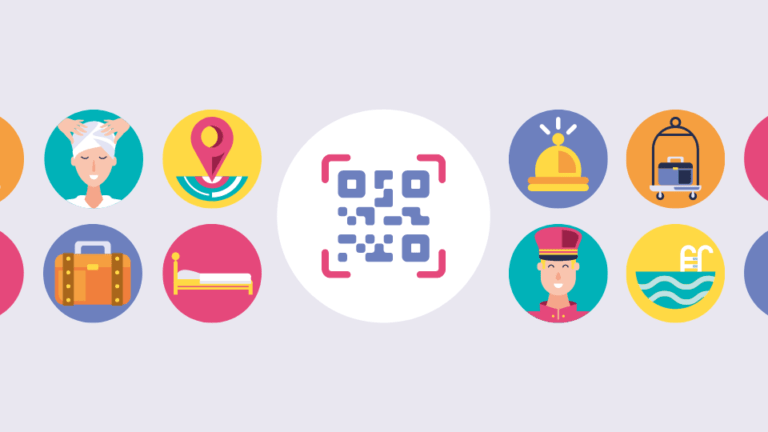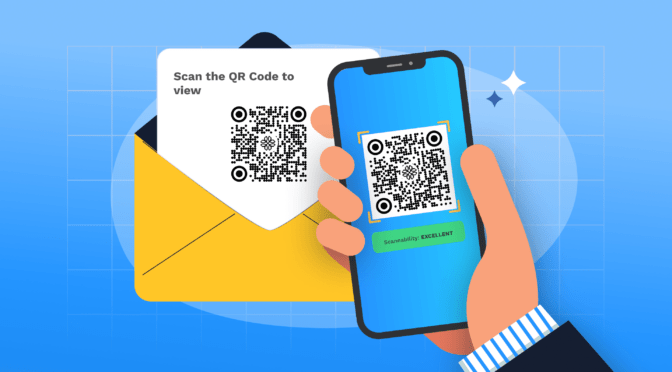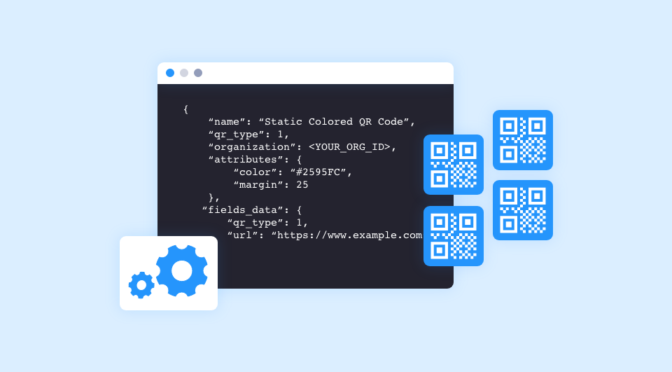QR Codes provide you with the golden opportunity to see the DNA of each customer’s interaction with your business partners. Although QR technology took a while to catch on in North America, it rapidly became the go-to solution for brands looking to craft touch-free experiences at the start of the pandemic.
Since then, QR Code strategy has evolved and the hospitality space has led the way.
There, QR Codes give customers streamlined access to online ordering through restaurant partnerships, easy ticketing with entertainment venues, and access to onsite and offsite services at hotels.
For B2B marketers looking to improve their marketing insights, here are three lessons to take away from the hospitality industry’s QR Code strategy.
1. To stay competitive, you must embrace QR scanning (Your customers already have)
QR Code use rose by 750 percent between February 2020 and August 2021. Translation: consumers regularly seek them out, and you should too.
When restaurants, hotels, and venues were hit by the first pandemic cancellations, hospitality leaders were quick to look to technology and creative ways to safely re-engage customers. Their early adoption of QR Codes to facilitate touch-free restaurant orders for pick-up made it possible for many vendors to stay in business. But what began as a necessity for safety has evolved into an opportunity for new data.
Today, this technology shapes the way hospitality establishments structure their partnerships.
Traditionally, if a hotel partnered with a nearby restaurant, a concierge might reference them in conversations with guests. Now, consumers possess the ability to quickly and independently place orders to these partnered restaurants with one scan. All it takes is one strategically placed QR Code to launch a customizable customer experience.
Some restaurants already accomplish this by storing customers’ orders gathered from Phygital marketing channels. Waitstaff can then use this information to improve the service, often through catered suggestions. An exemplary customer experience is one of the biggest differentiators between brands, and your competition knows that.
2. Strategic QR Code placement meaningfully impacts your customer experience
Simply placing a code on any surface won’t optimize its value. Your QR Code placement needs to be strategic and convenient for end-users.
How and where you place a QR Code often impacts your customer’s understanding of its purpose. This is why stickers with QR Codes arbitrarily placed around, for example, subway terminals likely won’t drive traffic to the code’s link. If there’s no clear purpose for the code and people don’t know where it will lead them, it doesn’t pass the most basic security test.
Hospitality establishments understand the strategic impact of aligning placement with purpose. That’s why, if you go to a hotel, you’re likely to encounter QR Codes right where you need them.

Clothes piling up and you need to do laundry? You’ll see a code to the right of the hamper that directs you to a laundering service, partnered with your hotel. Feeling hungry and inspecting your fridge for snacks? You can expect to find a QR Code on your refrigerator door that links you to a restaurant’s website, where you can order food in your room.
A well-placed QR Code isn’t just easy to use—it enhances the customer experience by providing guests with timely solutions to any issues they may face.
Strategic placement is also critical for securing customer insights. When you place a QR Code in a convenient location, it creates value both for your customer and your data collection.
After successful interactions, the odds customers will use QR Codes to further engage with your brand increase. This is, in part, because your placement demonstrates that your brand knows what customers are looking for and meets their expectations. If you’re aiming to increase visibility of B2B ecommerce platforms, consider leveraging targeted advertising, and seamless user experiences tailored to business needs.
3. Consistency in branding is a key element of a successful QR Code strategy
Customers won’t interact with your brand if they don’t trust you, but unified branding is an effective way to avoid this pitfall.
Even something that may seem simple, like the root domain of your URL after a person scans your QR Code, communicates how seriously your brand takes data security. For example, a custom URL that matches your company’s webpage can reassure customers that you’re not just using a free QR Code generator to facilitate what should be a secure digital transaction.
In hospitality, this consistency applies both to an establishment’s branding and co-branding with its partners. What does this mean? QR Codes should contain the same templates, logos, and colors as the rest of the establishment.
Unified branding applies to every aspect of a QR Code’s design. To ensure the security of your branding and co-branding efforts, identify QR Code platforms with certifications, like SOC2, and learn about compliance requirements in your state or in states where your customers may be, like CCPA for Californians.
These steps will become increasingly important as consumer awareness of security concerns grows. Already, an Ivanti survey found that 31 percent of respondents had scanned a QR Code that either did something they weren’t expecting or took them to a suspicious website.
This is why designing your QR Code in conjunction with your larger branding or co-branding efforts is such an essential task for B2B marketers. A well-branded QR Code sets expectations and communicates a higher level of security to your customers. This, coupled with a stellar customer experience, fosters trust and drives their willingness to scan.
A well-executed QR Code strategy builds brand awareness
The hospitality industry has truly embraced the QR Code. It’s a hands-free option that simultaneously gives customers greater and safer access to a company’s offerings and provides marketers with a new and exciting channel to source data.
This is why businesses should adopt the practices of hotels and restaurants, as their leadership is especially attuned to the importance of exceptional customer experiences. Encouraging QR Code usage helped them stay in business, and it’s fueling their outreach.
When you implement a sound QR Code strategy, it invests in a new way to improve and personalize the customer experience.
Enabling digital connections with every physical object and place on the planet











